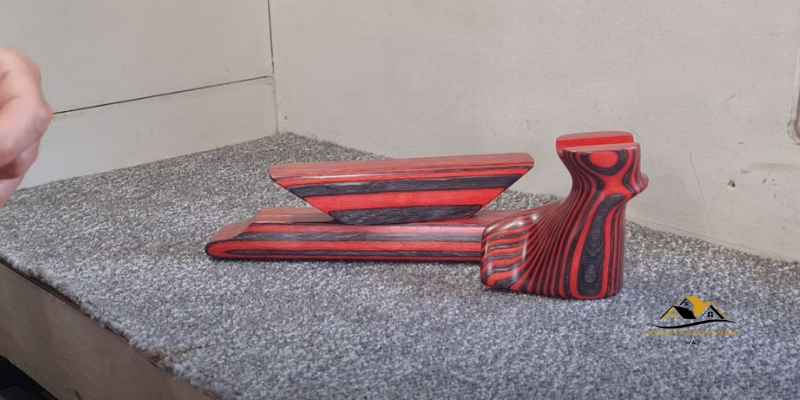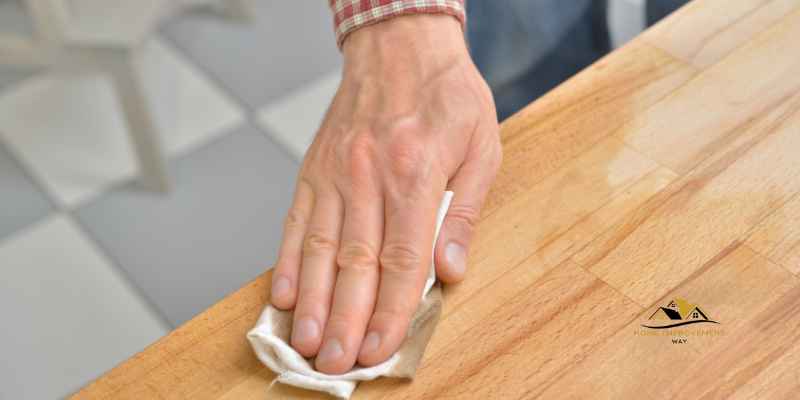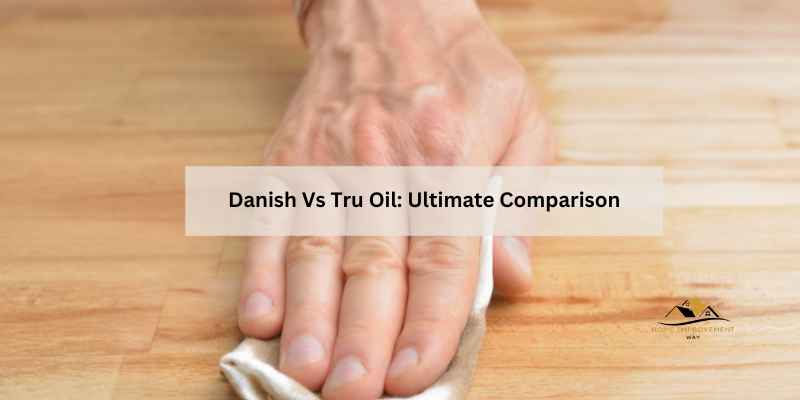Danish oil and Tru Oil are both boiled linseed oil-based finishes, with Danish oil providing a below-the-surface finish and Tru Oil offering both below and above the surface finish, allowing for a glossier appearance. While Danish oil penetrates deeper and is less prone to wear and scratches, Tru Oil can be built up for a glossier look but may be more susceptible to wear and tear.
When it comes to choosing the right finish for wood, it’s essential to understand the differences between products like Danish oil and Tru Oil. These two popular wood finishes have their own unique properties and applications. By comparing Danish oil and Tru Oil, you can make an informed decision about which finish will best suit your woodworking needs.
Let’s explore the characteristics of Danish oil and Tru Oil to help you determine the most suitable option for your project.
What Is Danish Oil?
Danish oil is a popular wood finishing product known for its ability to enhance the natural beauty of wood while providing protection. It is a blend of oil and varnish, often with added resins or driers. Danish oil is designed to penetrate the wood, offering a durable, moisture-resistant finish without forming a surface film.
Composition And Application
Danish oil typically consists of a mixture of linseed oil, tung oil, and varnish, often with added dryers or resins. The oil penetrates the wood, while the varnish provides a protective layer on the surface.
When applying Danish oil, it is essential to ensure that the wood surface is clean and dry. Using a lint-free cloth, apply the oil in the direction of the wood grain, allowing it to penetrate for a few minutes before wiping off any excess. Multiple coats can be applied, with each coat enhancing the depth of the finish.
Pros And Cons
- Pros:
- Enhances the natural beauty of wood
- Provides moisture resistance
- Penetrates the wood, rather than forming a surface film
- Easy application and maintenance
- Offers a low sheen finish
- Cons:
- Requires multiple coats for optimal protection
- May darken certain wood types
- Longer drying time compared to some other finishes
- Not as durable as some surface film finishes
What Is Tru Oil?
Tru Oil is a popular wood finish known for its versatility and ease of application. It is a blend of oils and resins that provide a durable and protective coat for wood surfaces.
Composition And Application
Tru Oil comprises a mixture of linseed oil, synthetic resins, and drying agents. This composition allows for a quick drying time and easy application process.
Pros And Cons
- Pros:
- 1. Easy to apply and dries quickly.
- 2. Provides a durable and protective finish.
- 3. Enhances the natural beauty of the wood.
- Cons:
- 1. Can be prone to wear and scratches over time.
- 2. May require multiple coats for a glossy finish.
Comparing Danish Oil And Tru Oil
Danish Oil is a blend of varnish and oil, while Tru Oil is a mix of linseed oil and synthetic resins.
Applying Danish Oil requires multiple coats with drying time in between, whereas Tru Oil can be applied in fewer coats due to its faster drying time.
Danish Oil provides a matte finish, while Tru Oil offers a glossy finish that can be built up for more shine.
- Danish Oil: Easy application, natural look, but requires more coats.
- Tru Oil: Quick drying, durable finish, but can be prone to scratches.
Danish Oil Vs Tru Oil For Wood Finishing
When it comes to wood finishing, choosing the right oil can make a significant difference in the final look and durability of your project. Danish Oil Vs Tru Oil for Wood Finishing is a common dilemma for woodworkers, each having its own unique properties and applications. Let’s explore the differences between the two and understand which one might be the best fit for your next woodworking project.
Choosing The Right Oil For Your Project
Before diving into the application process, it’s essential to understand the distinct characteristics of Danish oil and Tru oil. Danish oil is a popular choice known for its deep penetration into the wood, enhancing the natural grain and color. On the other hand, Tru oil is renowned for its ability to build up a glossy finish and provides a durable protective layer on the wood surface. Depending on your project’s requirements, you can make an informed decision on which oil to use.
Applying Danish Oil And Tru Oil On Wood
When applying Danish oil, it’s crucial to ensure the wood surface is clean and free from any existing finish. Using a lint-free cloth, apply the oil generously and allow it to penetrate the wood for a few minutes before wiping off any excess. In contrast, Tru oil can be applied in thin layers using a clean cloth, allowing each layer to dry before adding another. This process can be repeated to achieve the desired level of gloss and protection.
Common Issues And Solutions
- Blotchiness: If you encounter blotchiness when using Danish oil, consider using a wood conditioner before applying the oil to achieve a more uniform finish.
- Scratching: With Tru oil, the built-up glossy finish is susceptible to scratching. To address this, consider applying additional layers to reinforce the protective coating.
- Drying Time: Danish oil typically requires more time to cure compared to Tru oil. Ensure proper ventilation and adequate drying time between coats for optimal results.
By understanding the unique characteristics and application techniques of Danish oil and Tru oil, you can make an informed decision based on your specific woodworking project’s needs.
Danish Oil Vs Tru Oil For Guitar Finishing

For guitar finishing, Danish Oil offers a durable, below-the-surface finish, while Tru Oil provides a glossy look with both below and above-surface application. Danish Oil is known for toughness, while Tru Oil offers a buildable gloss but may be prone to wear and scratches over time.
Factors To Consider When Choosing An Oil Finish For Guitars
Before choosing between Danish oil and Tru oil for guitar finishing, it is important to consider certain factors. Firstly, the type of wood being used for the guitar body and neck should be taken into consideration. Secondly, the desired finish, whether it is a high gloss or a natural look, should be kept in mind. Thirdly, the ease of application and drying time should be considered. Finally, the durability and resistance to wear and tear of the finish should also be taken into account.
Application Process For Danish Oil And Tru Oil On Guitars
The application process for Danish oil and Tru oil on guitars is quite similar. Both oils can be applied using a clean cloth or brush, and excess oil can be wiped off after a few minutes. Danish oil requires two to three coats, with light sanding between each coat, and can take up to 24 hours to dry completely. On the other hand, Tru oil requires multiple coats, with light sanding and buffing between each coat, and can take up to a week to dry completely.
Comparing The Results
When it comes to comparing the results of Danish oil and Tru oil, it ultimately depends on the individual’s preference. Danish oil provides a natural, matte finish that enhances the wood grain, while Tru oil can be built up to create a high gloss finish. However, Tru oil is known to be more durable and resistant to wear and tear compared to Danish oil. It is also important to note that Tru oil can be prone to scratches and wear if not applied properly.
In conclusion, both Danish oil and Tru oil have their pros and cons when it comes to guitar finishing. Factors such as the type of wood, desired finish, ease of application, and durability should be considered before making a decision. Ultimately, it comes down to personal preference and the desired outcome.

Frequently Asked Questions
Is Danish Oil The Same As Tru Oil?
Danish Oil is a below-surface finish, while Tru Oil is both below and above, allowing a glossier finish. Tru Oil can be built up but may wear off easier.
What Oil Is Better Than Danish?
Teak oil offers faster drying and curing times than Danish oil, penetrating and protecting wooden surfaces instantly. Teak finishing products are ideal for outdoor furniture, decking, flooring, and boats.
What Are The Disadvantages Of Danish Oil?
Danish Oil can take longer to dry compared to other finishes. It may need multiple coats for a glossy finish. Also, it may not provide as much protection against scratches and wear.
Which Is Better, Danish Oil Or Tung Oil?
Both Danish oil and tung oil have their benefits. Danish oil provides a more natural finish, while tung oil offers better water resistance. Ultimately, the choice depends on the specific requirements of your project.
Conclusion
Both Danish oil and Tru oil have their unique advantages. Danish oil is known for its deep penetration and natural finish, while Tru oil offers a durable and glossy surface. Understanding the specific requirements of your project will help you make an informed decision between the two.
Consider the characteristics of each oil and the desired outcome before making your choice.


